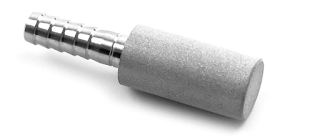Adjuncts are unmalted grains (such as corn, rice, rye, oats, barley, sugars, and wheat) or grain products that are used in beer making to supplement the main mash ingredient (which is usually malted barley).
So an adjunct can be anything added to beer such as:
- Unmalted wheat, barley, rye, oats, maize, and other grains
- Belgian syrups
- Honey, maple syrup, molasses, other sugars like jelly beans.
- Fruit, pumpkins (!)
The reasons for adding an adjunct are varied. Some brewers will seek them for head foam retention, flavour or even to cut costs!
There is another reason why brewers use high-adjunct beers, and that's to make high alcohol beers.
By adding extra sugars, for example, the yeast will ferment that in addition to the malt, thus produce more alcohol.
When adding adjuncts to the beer one needs to understand that this can hamper an efficient fermentation as the yeast can tend to get a bit overwhelmed by all the extra sugar.
To adjust for this, brewers who are looking to brew a high ABV beer, will add a yeast nutrient to give the yeast some respite from all the sugar.
Adjuncts can also be used to achieve specific beer styles and flavors:
- Use simple sugars such as that from corn can be used to lighten the beer body and encourage a good rate of attenuation of your high-gravity styles.
- The addition of flaked barley or rye can promote a strong head and a full body (which is good for mouth feel).
- Tossing in a handful of flaked oats is known to result in silky mouthfeel.
- Flaked rice, when matched with an earnestly hopped pale lager, is another method of changing the taste profile.
- Using cherries and raspberries in sour ales is a popular trick
The Art and Science of Brewing With Adjuncts
While the use of adjuncts in beer making is sometimes met with skepticism by purists, who may invoke the German Beer Purity Laws as a standard, the craft lies in the brewer's skill to balance these supplementary ingredients without compromising the integrity of the beer. Knowledgeable brewers understand the intricate chemistry behind the fermentation process, tailoring their use of adjuncts to achieve the desired flavor profile, mouthfeel, or alcohol content. - The key is to keep the yeast's capabilities and limitations in mind, especially when brewing high-alcohol beers. Properly employed, adjuncts can serve as the brewer's palette, offering a spectrum of colors and textures to create a truly unique masterpiece.
The Future of Adjuncts in Beer Brewing
As the craft beer industry continues to evolve, so too will the use of adjuncts. From nano-breweries to large-scale operations, the quest for unique, marketable flavors has never been more intense. Today's consumers are adventurous and open to experimental brews—be it a sour ale bursting with the tartness of cherries and raspberries, or a strong stout enriched with the complex flavors of molasses and flaked oats. Brewers who are attuned to the potentials and pitfalls of adjunct usage are well-positioned to innovate, capturing the palates of a new generation of beer enthusiasts who seek the extraordinary in every sip.








